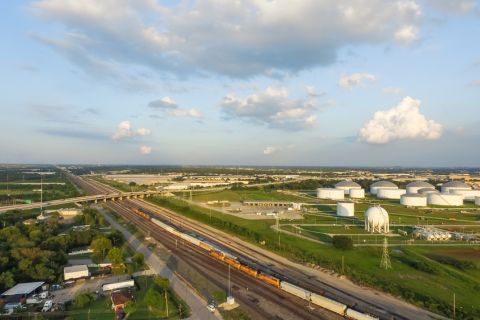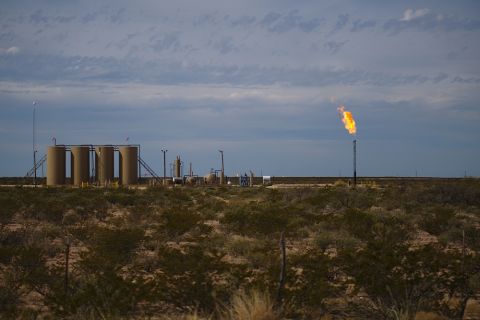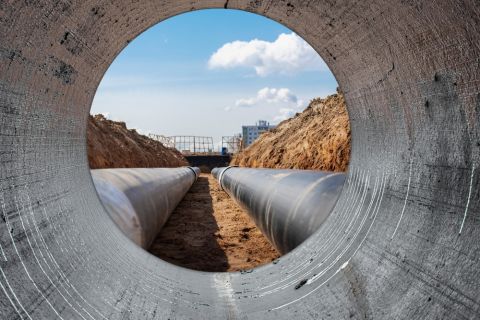What does an operator do if he or she has to make a key decision based on pressure readings provided by two gauges, but they are registering conflicting information? One must be malfunctioning, but that operator has to make a decision quickly regarding which gauge to trust. It sounds like the final climactic scene of a blockbuster action film, but this is one of the scenarios that led to the Deepwater Horizon disaster. The crew had to roll the dice and ended up making the wrong decision, believing that the gauge that was actually functioning properly was malfunctioning. The end result was 11 lost lives and billions of dollars in environmental cleanup costs, destroyed equipment, regulatory fines, and litigation expenses.
The entire incident might have been avoided had both gauges, likely not costing more than US $100 each, been functioning properly. This issue is much more commonplace than most people would believe: 25% of all gauges in an average facility are broken, damaged, or misapplied. Any of these situations can lead to unreliable readings. Even more formidable is that there are eight failing or about-to-fail gauges located within 6 m (20 ft) of each employee at the average facility.
The problem is that gauges are not top-of-mind for most plant operators. Maintenance engineers spend a large portion of their time on high-value equipment like distillation towers, heat exchangers, and pumps. These items have obvious and substantial negative ramifications if they fail. But what about the humble gauge? Gauges can be compared to alarms. They are early detection devices or “leading indicators” that serve as warnings to more significant issues. To ignore them is to sacrifice an extremely important and simple early notification system that can prevent enormous and costly failures in the future.
Why, then, would plant safety and reliability personnel overlook such a key process measurement device? The answer has many facets and largely boils down to a lack of awareness of how important gauges are rather than conscious disregard. Over the past few decades, most facilities have seen a shift in core instrumentation from analog to digital devices. Frontline readings are now typically obtained from electrical readings in a control room instead of gauges on the machinery itself. Knowing that traditional gauges were still critical for both backup readings and immediate information for local workers within the plant, operators left gauges in place during the conversion to electrical monitoring, but they neglected to continue proper maintenance for them.
The responsibility for maintaining electrical instrumentation typically falls onto instrumentation and electrical (I&E) engineers. Though well-versed in electrical components, I&E engineers are not experts on mechanical instrumentation, so maintenance departments have taken responsibility for traditional gauges. Through an environment of cost-cutting, downsizing, and distributing responsibilities among staff, the industry has experienced “brain drain” whereby personnel who truly understood mechanical instrumentation started to retire. As a result, responsibility for this instrumentation began to shift from qualified maintenance personnel to plant technicians and unit operators. In many facilities there is no formal ownership of gauge maintenance.
Naturally, this creates a dangerous situation for the entire facility. Workers often trust gauges and make decisions based on the readings that they can physically see. When these gauge readings are inaccurate, it can lead to media leakage, fugitive emissions, employee injury or death, fines from regulatory agencies, damage to more expensive equipment, litigation, and operational losses from plant evacuations and shutdowns. Compounding this is the fact that many facilities are aging and most have not seen significant upgrades in the past 40 years despite producing more than ever before. This makes early-warning devices that properly function of paramount importance.
Something else to consider is that mechanical gauges can at times become the primary instruments for the entire plant instead of just local or backup systems. During power failures or other disruptions of electrical equipment, all plant personnel must rely on readings from mechanical gauges. It’s important to remember that just because a facility loses power, it does not mean that chemical reactions stop happening. If a reaction cannot be accurately monitored due to unreliable instrumentation, it presents a danger for the entire facility and its workers. Facility operators can take simple steps to ensure properly functioning gauges and beef up facility safety and reliability.
Audit
In most circumstances, a full audit of all instrumentation in a plant is a worthwhile endeavor. An audit can be conducted internally or by obtaining free help from an outside firm like WIKA’s Full Audit Service Team (FAST). In either case, the audit should begin with a thorough review of the facility’s pressure and instrumentation diagram (P&ID) and gauge specification. These documents should contain maps and descriptions of where gauges belong and what their specification is for that particular application within the facility. The audit team should conduct a full walkthrough of the facility and cross-reference each gauge with what is called for on the P&ID. A commonly encountered issue is that the P&ID and gauge specification are outdated. Ideally, both should be updated whenever a change occurs to the process or instrumentation, but often this is not done. It’s not even uncommon to encounter P&IDs and gauge specifications that have never been updated since the facility was opened. Considering that most facilities in operation today are decades old and the fact that dozens of gauges can be replaced each week by well-intentioned workers who use the wrong gauge in the wrong application, it’s easy to understand how safety and reliability can spin out of control. In these cases, instrumentation engineers must determine appropriate gauges for each location and update the P&ID and gauge specification to allow proper maintenance in the future.
Implement
Once the audit is complete and all issues have been identified, corrective measures can be taken. Any malfunctioning or misapplied gauges should be replaced with appropriately specified equipment. Identifying circumstances that may have led to early degradation of instruments also should be corrected to prevent future failures.
Another important aspect of proper implementation is to consider the root cause of failure. There are many causes of gauge failure, including vibration, pulsation, temperature, overpressure, corrosion, clogging, steam, and improper use. Selecting appropriate gauges – with appropriate accessories, if warranted – is a suitable solution in most cases, but in some instances the processes themselves may need to be reviewed and altered. Replacement gauges should draw from as few stock-keeping units (SKUs) as possible to avoid confusion to workers when it is time to replace them. Additionally, an onsite storeroom should be adequately stocked with an appropriate level of inventory to avoid searching for a suitable instrument when needed. Inventory selection and efficiency are services that should be provided as part of any full-service audit.
Educate
This is the most important aspect of any instrumentation safety and reliability program because the work of the audit team will be short-lived if employees do not have the knowledge to keep the changes intact. In fact, most misapplied gauges result from well-meaning employees who made honest efforts to install the correct equipment but did not have the appropriate knowledge to do so properly. Damage to instruments also results from employees who inadvertently abuse the devices by wrenching the case or body of the instrument during installation.
Proper safety and maintenance training should be a priority for employees who come near gauges. They should be shown how to keep gauges operational and what types of failures to look for so that any problems can be detected and corrected as early as possible. The technicians responsible for mechanical instrumentation must learn which SKUs are proper replacements and how to locate and install them quickly.
By addressing broken, misapplied, and damaged gauges, any plant can increase its overall safety, reliability, and productivity without incurring significant expense. As petroleum engineers retire at breakneck speed and with dwindling numbers of college graduates specializing in the field, the onus falls onto plant operators, parts suppliers, and external audit teams to work together to ensure facility safety.
Recommended Reading
Midstream Operators See Strong NGL Performance in Q4
2024-02-20 - Export demand drives a record fourth quarter as companies including Enterprise Products Partners, MPLX and Williams look to expand in the NGL market.
Post $7.1B Crestwood Deal, Energy Transfer ‘Ready to Roll’ on M&A—CEO
2024-02-15 - Energy Transfer co-CEO Tom Long said the company is continuing to evaluate deal opportunities following the acquisitions of Lotus and Crestwood Equity Partners in 2023.
Waha NatGas Prices Go Negative
2024-03-14 - An Enterprise Partners executive said conditions make for a strong LNG export market at an industry lunch on March 14.
Pembina Pipeline Enters Ethane-Supply Agreement, Slow Walks LNG Project
2024-02-26 - Canadian midstream company Pembina Pipeline also said it would hold off on new LNG terminal decision in a fourth quarter earnings call.
Targa Resources Forecasts Rising Profits on 2024 Exports
2024-02-20 - Midstream company Targa Resources reports a record fourth quarter in volumes and NGL fractionation.





